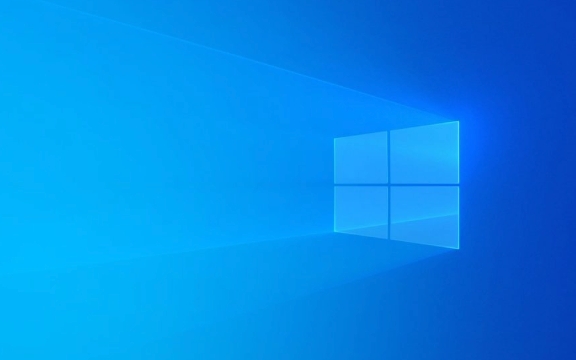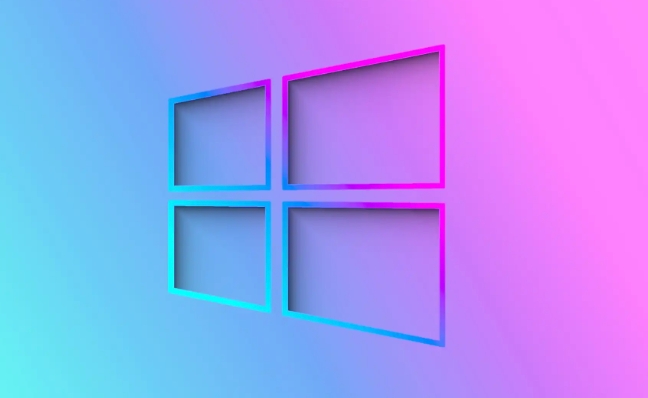How to resolve file system errors in Windows
Run CHKDSK with command chkdsk C: /f /r in Admin Command Prompt to scan and fix file system errors, scheduling it on reboot if the drive is in use. 2. Use SFC by running sfc /scannow to repair corrupted Windows system files, and if needed, run DISM /Online /Cleanup-Image /RestoreHealth before SFC. 3. Use Windows Built-in Error Checking via drive Properties > Tools > Check to initiate a scan with basic repairs. 4. Check disk health using third-party tools like CrystalDiskInfo or HD Tune to detect hardware issues and replace failing drives. 5. Prevent future errors by shutting down properly, using a UPS, updating system and drivers, running monthly disk checks, and avoiding abrupt disconnection of external drives; regular maintenance with these tools helps avoid most file system issues.

File system errors in Windows can cause issues like slow performance, file corruption, or even prevent your system from booting. These errors might stem from improper shutdowns, disk failures, malware, or hardware issues. Fortunately, Windows includes built-in tools to help diagnose and fix most file system problems. Here’s how to resolve them effectively.

1. Run CHKDSK (Check Disk)
CHKDSK is the primary tool for scanning and repairing file system errors on a drive.
Steps to run CHKDSK:

Press Windows X and select Command Prompt (Admin) or Windows Terminal (Admin).
-
Type the following command and press Enter:

chkdsk C: /f /r
- Replace
C:with the drive letter you want to check. /ftells CHKDSK to fix errors./rlocates bad sectors and recovers readable information (includes/f).
- Replace
If the drive is in use (especially the system drive), you’ll be prompted to schedule the scan on the next restart. Type
Yand press Enter.Restart your computer. The scan will run before Windows loads — this may take some time depending on drive size and errors found.
Note: Don’t interrupt the process. If the disk has physical damage, CHKDSK might take hours.
2. Use the SFC (System File Checker) Tool
While SFC doesn’t fix general file system errors on data drives, it checks and repairs corrupted Windows system files, which can sometimes be mistaken for file system issues.
Run SFC:
Open Command Prompt as Administrator.
Type:
sfc /scannow
Wait for the scan to complete. If corrupted system files are found, SFC will attempt to repair them automatically.
If SFC fails to fix issues, run:
DISM /Online /Cleanup-Image /RestoreHealthThen run
sfc /scannowagain.
3. Use Windows Built-in Error Checking
This is a graphical way to check and fix file system errors.
Steps:
- Open This PC.
- Right-click the drive you want to check (e.g., Local Disk C:), and select Properties.
- Go to the Tools tab.
- Under Error checking, click Check.
- If prompted, click Scan drive (or Repair drive if an issue is found).
This method runs CHKDSK in the background with basic repair options.
4. Check Disk Health with Third-Party Tools
Sometimes file system errors are symptoms of failing hardware. Use tools like:
- CrystalDiskInfo – Monitors drive health using SMART data.
- HD Tune – Checks for bad sectors and performance issues.
If the drive shows signs of failure (e.g., reallocated sectors, high temperature), back up your data immediately and consider replacing the drive.
5. Prevent Future File System Errors
To minimize future issues:
- Always shut down Windows properly.
- Use a UPS to prevent sudden power loss.
- Keep your system and drivers updated.
- Run periodic disk checks (monthly for mechanical drives).
- Avoid forcefully disconnecting external drives.
Resolving file system errors usually comes down to using CHKDSK and SFC, but it's important to rule out underlying hardware problems. Regular maintenance can prevent most common issues. Basically, don’t wait for errors to appear — schedule occasional checks, especially on older drives.
The above is the detailed content of How to resolve file system errors in Windows. For more information, please follow other related articles on the PHP Chinese website!

Hot AI Tools

Undress AI Tool
Undress images for free

Undresser.AI Undress
AI-powered app for creating realistic nude photos

AI Clothes Remover
Online AI tool for removing clothes from photos.

Clothoff.io
AI clothes remover

Video Face Swap
Swap faces in any video effortlessly with our completely free AI face swap tool!

Hot Article

Hot Tools

Notepad++7.3.1
Easy-to-use and free code editor

SublimeText3 Chinese version
Chinese version, very easy to use

Zend Studio 13.0.1
Powerful PHP integrated development environment

Dreamweaver CS6
Visual web development tools

SublimeText3 Mac version
God-level code editing software (SublimeText3)
 How to Fix the BAD_POOL_CALLER Blue Screen Error in Windows
Aug 16, 2025 am 02:47 AM
How to Fix the BAD_POOL_CALLER Blue Screen Error in Windows
Aug 16, 2025 am 02:47 AM
Restartyourcomputertoresolvepotentialtemporaryglitches.2.BootintoSafeModebytriggeringAutomaticRepairandselectingStartupSettingstoisolatetheissue.3.Uninstallorrollbackrecentlyinstalleddriversorsoftware,especiallygraphics,network,orstoragedrivers,andup
 How to find your Windows version number
Aug 15, 2025 pm 04:16 PM
How to find your Windows version number
Aug 15, 2025 pm 04:16 PM
PressWindowskey I,gotoSystem>AbouttoseeWindowsedition,version,andOSbuild.2.PressWindowskey R,typewinver,andpressEntertoopenawindowshowingtheversionandbuildnumber.3.OpenCommandPromptorPowerShellandtypeverorrunGet-ComputerInfotodisplayversiondetails
 How to enable BitLocker in Windows
Aug 17, 2025 pm 02:25 PM
How to enable BitLocker in Windows
Aug 17, 2025 pm 02:25 PM
BitLockerisavailableonWindows10/11Pro,Enterprise,andEducation,butnotonHomeedition—usedeviceencryptioninsteadifsupported.2.EnsureyoursystemhasaTPM1.2orhigher,administratorrights,andatleasttwopartitions.3.EnableBitLockerviaControlPanelbyselectingthedri
 How to fix 'The activation server determined the specified product key has been blocked' in Windows
Aug 16, 2025 pm 12:32 PM
How to fix 'The activation server determined the specified product key has been blocked' in Windows
Aug 16, 2025 pm 12:32 PM
VerifytheproductkeywaspurchasedfromMicrosoftoranauthorizedretailerandavoidgray-marketsellers.2.Ensurethekeyhasn’tbeenoverused;deactivateonolddevicesandlinkthekeytoyourMicrosoftaccount.3.ContactMicrosoftSupportwithproofofpurchasetorequestunblockingora
 Fixed: Windows Is Getting 'IRQL_NOT_LESS_OR_EQUAL' Error
Aug 15, 2025 pm 04:12 PM
Fixed: Windows Is Getting 'IRQL_NOT_LESS_OR_EQUAL' Error
Aug 15, 2025 pm 04:12 PM
First try to enter safe mode to eliminate third-party drivers or software problems. 1. Restart and interrupt startup three times in a row to enter automatic repair. Select the boot settings in the advanced options and press F4 or F5 to enable safe mode after restarting; 2. Update or roll back suspicious drivers, especially network, display, disk and USB controller drivers, which can be operated through the device manager or manually downloaded from the manufacturer's official website; 3. Run Windows Memory Diagnostic Tool (mdsched.exe) or use MemTest86 to detect RAM errors, and replace the memory stick if necessary; 4. Use the sfc/scannow and DISM/Online/Cleanup-Image/RestoreHealth commands to repair the system text
 How to choose the right edition of Windows to install?
Aug 17, 2025 pm 01:04 PM
How to choose the right edition of Windows to install?
Aug 17, 2025 pm 01:04 PM
Formostusers,Windows10/11Homeissufficient;chooseWindowsProifyouneedbusinessfeatureslikeBitLocker,RemoteDesktop,orHyper-V,1.Homeisidealforeverydayuse,2.Prosuitsremoteworkersandsmallbusinesses,3.ProforWorkstationsbenefitshigh-performanceusers,4.Educati
 How to fix 'Your organization manages this setting' in Windows?
Aug 14, 2025 pm 11:43 PM
How to fix 'Your organization manages this setting' in Windows?
Aug 14, 2025 pm 11:43 PM
First,checkifyourdeviceismanagedbygoingtoSettings>Accounts>Accessworkorschoolanddisconnectanylistedaccountifallowed.2.IfusingWindowsPro,Education,orEnterprise,opengpedit.msc,navigatetotherelevantpolicy,setittoNotConfiguredorDisabled,thenrestart
 Fixed: Windows Is Getting 'api-ms-win-crt-runtime-l1-1-0.dll is missing' Error
Aug 17, 2025 pm 02:13 PM
Fixed: Windows Is Getting 'api-ms-win-crt-runtime-l1-1-0.dll is missing' Error
Aug 17, 2025 pm 02:13 PM
First, install the latest Windows updates, then install the Microsoft VisualC Redistributable package, then run the System File Checker (SFC) to repair the system files, and finally avoid manually downloading the DLL file. The specific steps are: 1. Go to Control Panel > Windows Update, install all important updates, especially "UniversalCRuntime" related updates, to ensure that the system has SP1 and IE11 installed; 2. Download and install VisualC Redistributable2015-2022 (x86 and x64 versions); 3. Run "sfc/scann as an administrator








